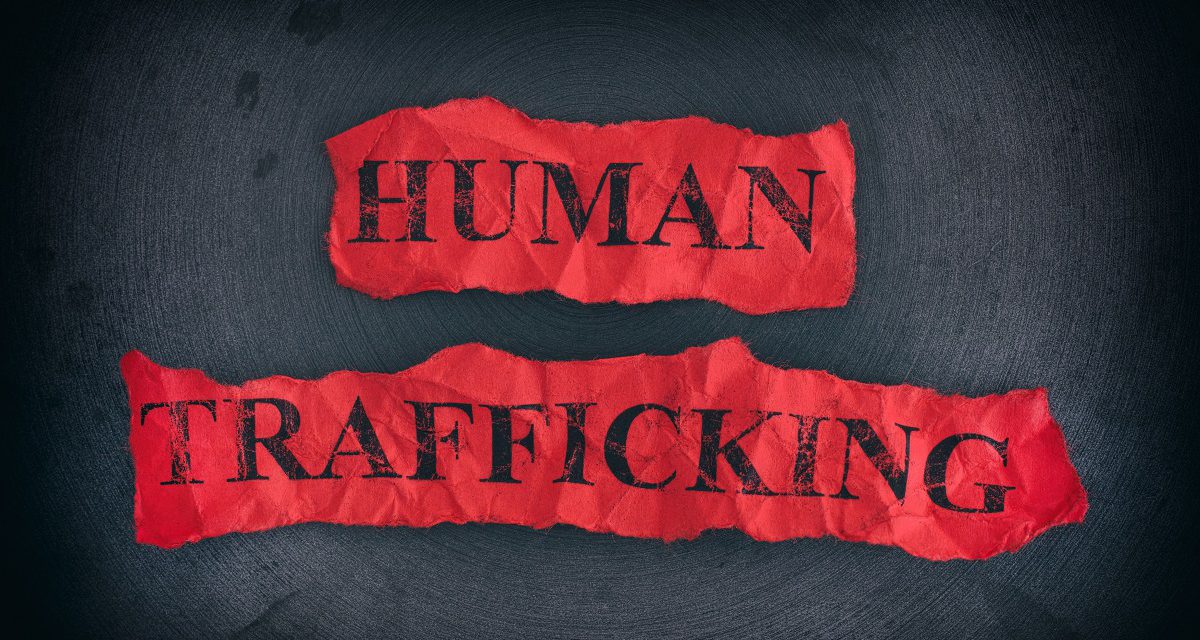Due to the sensitive nature of the topic and industry, the source interviewed is using a different name for the sake of anonymity. She works in the human trafficking prevention industry in Kansas and Missouri, tracing money movement between trafficking groups and has undergone multiple trainings with Wichita Police Department and other local organizations.
According to the 2019 Federal Human Trafficking Report, Missouri ranked among the top 10 states last year for the number of defendants prosecuted in human trafficking cases. Human trafficking, defined in the report as “the coercive exploitation of another person for commercial gain,” is currently in the public spotlight. Unfounded conspiracy theories such as Q-Anon and the connected Wayfair wardrobe scandal, as well as the recent arrest of NXIVM cult leader Keith Raniere for trafficking women for sex under the guise of a self-help program, have sensationalized the public depiction of human trafficking. However, rural areas such as Missouri and Kansas often see human trafficking on a much more intimate scale than the large, violent, organized operation rings seen in these theories, cults, or films like Taken. While it is important to be aware of and discuss the issue of human trafficking, getting caught up in theories or extreme cases distracts from the damage being done locally. Because traffickers in rural areas target vulnerable people, especially people they have already established relationships with, it is crucial to understand what human trafficking looks like, recognize the tell-tale signs, and know prevention methods and recovery resources.
Human trafficking: forced labor vs sex trafficking
The Human Trafficking Institute criminalizes human trafficking under two main offenses: forced labor and sex trafficking. While sex trafficking is more commonly thought of, Missouri and Kansas see more forced labor or cases where the two are connected, such as forced prostitution or massage parlors, according to Ariana Moore. Moore works in Missouri and Kansas spotting financial trends that indicate any form of trafficking, laundering, or elder financial crime.
Moore said Missouri and Kansas are considered “source states” where traffickers come to acquire new victims because the highway systems are easily accessible from surrounding areas. Also, the states’ midwestern hospitality often overshadows critical thinking. “We are too nice and don’t question people enough,” Moore warns. The Federal Human Trafficking Report, a cumulation of data tracking prosecuted human trafficking cases in the US, states that the majority of victims know their trafficker and may have an established relationship, citing social media connections and fraudulent job advertisements as frequent forms of recruitment. Traffickers especially target vulnerable people, using drug dependencies, the need for shelter and money, or promise of help with immigration paperwork or status to keep victims under their control without necessarily needing to resort to physical violence.
“The types of labor trafficking we see the most here will be in domestic industries like maids, hotel workers, nannies; traveling crews from carnival workers to pan-handlers; restaurant workers, massage parlors, strip clubs, and nail salons,” Moore says. She also warns that these victims often seek shelter or food over cash and may not consider themselves a victim or know they’ve been exploited. “It’s not like a scene from Taken – it’s more like a family member or close family friend. They have been manipulated and treated quite well by their trafficker, usually to the point where they don’t know what’s going on until recovery efforts are underway.”
How buyers and money move
Rural areas in the Midwest are hotspots for forced labor trafficking because of travel industries. According to Moore, traffickers take “routes” through the Midwest to reach new clientele, and buyers also travel through the area often for work. Buyers historically are truck drivers, traveling construction workers, pilots, and others who may disappear as soon as the day after they arrive. “The traffickers, the buyers, the victims – they’re all scattered and gone in no time thanks to our highways.”
Fortunately, the movement of money and trends that Moore and others follow make trafficking increasingly easier to spot in a bank account. Traffickers find ways to trickle cash into the banking system and use debit cards, usually showing a couple ATM cash deposits, a large hotel charge, a large grocery store trip, followed by gas and or other travel purchases such as flights to a new location where the trend repeats again. “Because each purchase is tied to a location, I can trace exactly what their route is,” Moore explains, reassuring those who travel for work that there is a noticeable difference between one person traveling and paying their way versus the trends of a trafficking group traveling.
Signs to look for
Some tell-tale signs to spot trafficking, specifically forced labor, include any mention of a person living with their boss, employer, or all their coworkers; someone who receives cash wages, and minors who are not in school during school days. In 2019, 5.1% of federal human trafficking prosecutions were forced labor cases with the three most affected industries being domestic work (32.1%), restaurant or food work (17.9%), and agriculture (17.9%). The largest coercion methods for forced labor in 2019 were withholding pay (69% of cases) and physical isolation (65.5%) before threats or acts of physical abuse. Forced labor trafficking especially affects victims facing language barriers or an uncertain citizenship status as traffickers use the promise of future legal assistance or financial help and an exploitation of their fear and alienation to exert control. The three largest forms of recruitment for forced labor in 2019 in the US were fraudulent job offers (39.3%), fraudulent drug rehabilitation programs (26.8%), or pre-existing relationships between traffickers and victims (26.8%).
Substance dependency is also a warning sign, especially for sex trafficking, as it allows traffickers to manipulate and “brainwash” victims, as Moore states. “This could be anything from getting them hooked on substances, making them think they’re in a relationship with the trafficker, culturally disorienting them, physical or psychological abuse, and even flat out depriving them of basic needs.” Red flags for sex trafficking are similar to forced labor cases and also include a controlling partner and/or branding.
“Branding will be the easiest to spot – it’s usually a man’s name tattooed on the neck or hands. This makes victims easily identifiable between different rings.” In the recent NXIVM case, FBI investigations into the multi-level-marketing company-turned-cult began after several former members stepped forward with evidence including one woman who was branded on her pelvic region with the founder’s initials during a ritual for the group’s secret society of women. While the male founder was involved in the creation and actions of the group, women with higher roles in the company and personal connections to him were given “master” roles over other women deemed “slaves” and were forced to continuously recruit more (and younger) women to the company, especially the secret society, using blackmail.
According to Moore, traffickers are anywhere from 19 to 45 years old, 90% of which have a prior criminal record and/or history with drug and alcohol abuse, and 50% of which have not completed high school. Sex trafficking victims in this area are usually only 12-14 years old and mainly consist of foster kids or runaways with some knowledge or history of abuse. Buyers can be “anywhere from 18 to 89” and often work with children. “Think teachers, coaches, military recruiters, Boy Scout leaders, etc.,” Moore says, adding that 99% of buyers are male and 22% are in a position of trust with the community such as police, pastors, or local politicians.
The Human Trafficking Institute warns that while popular imagery depicts sex trafficking as a violent crime, only 27 active cases in 2019 involved exclusively violent coercion. Traffickers who are able to more subtly coerce victims to comply can more easily manipulate and exploit victims, allowing profits to increase while also making it more difficult to be caught or charged by law enforcement. In 2019, in nearly a third of all active sex trafficking cases, defendants controlled their victims without using violence.
Looking ahead
While conversations about human trafficking have made the public spotlight again recently, Moore worries the sensationalized theories distract from getting real people tangible help. “The fact that these stories are being reported on is great and it’s definitely making people think, but it always seems like the conversation is cut short right before the local organizations that combat this every day are looped in and can provide real meaningful insight.”
Moore urges communities to continue educating each other about the signs and dangers of human trafficking, including getting involved with local nonprofits who provide resources to victims after the fact. “Volunteer with these organizations, interview them, sign up for their newsletters, get your friends involved, anything! Getting involved directly with these organizations is the best way to learn.” According to Moore, the resources human trafficking survivors need include: medical care, safety planning, treatment for major trauma/complex PTSD, long-term counseling, financial education, housing, assistance testifying against pimps/traffickers, addiction treatment, and employment assistance.
The National Human Trafficking Hotline is 1-888-373-7888 and can also be accessed by texting “BEFREE” or “HELP” to 233733 or e-mailing help@humantraffickinghotline.org. Their website has various resource functions including reporting a tip and searching a national directory for local services and organizations assisting victims and survivors. The Missouri Coalition Against Domestic and Sexual Violence (MCADSV) offers local resources for Missourians including support groups, counseling, hospital/medical advocacy, assistance in court and with law enforcement, and immigration advocacy among other forms of support. Find services and other support locally at https://www.mocadsv.org/How-to-Get-Help/.






